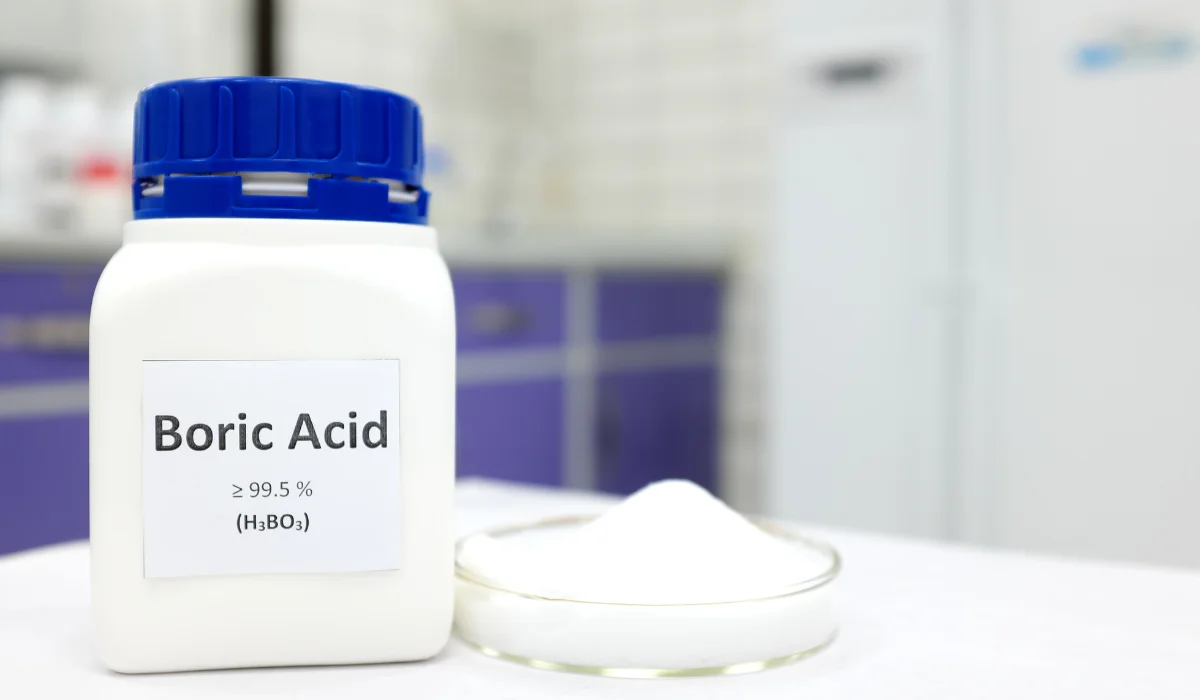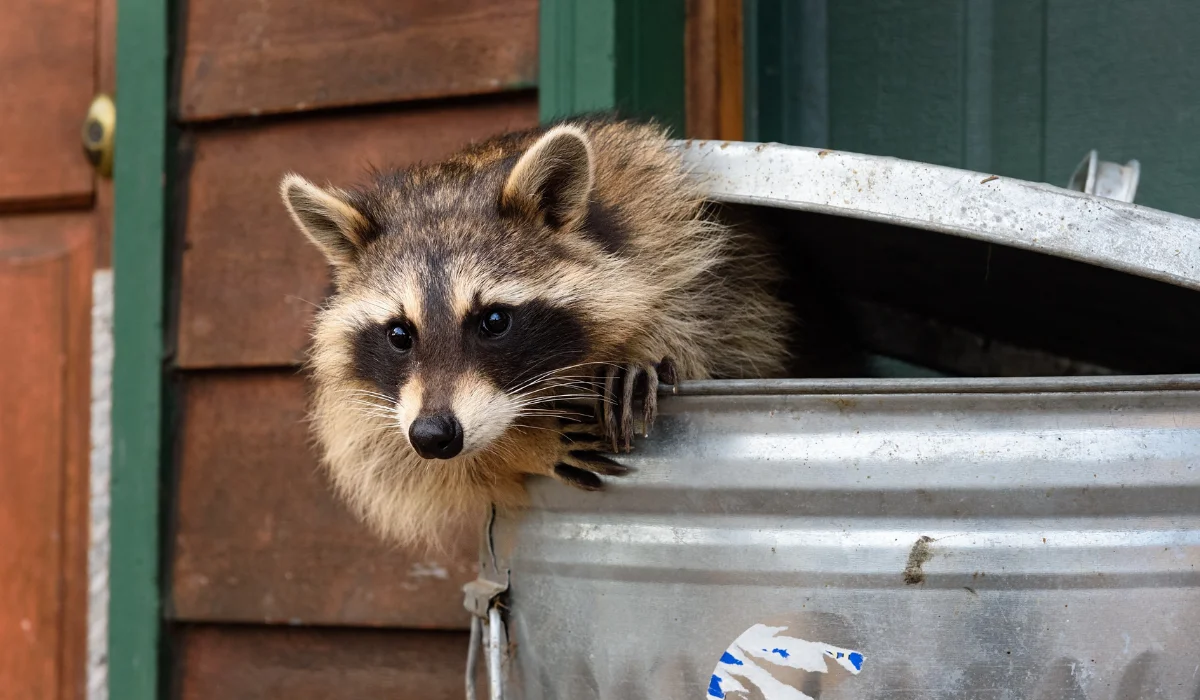Has anyone else been surprised by an unexpected flea invasion in their home? Boric acid could be the simple solution you’ve been looking for to tackle these unwelcome guests.
But how effective is it, and what are the safest ways to use it? Keep reading to find out the best methods and tips for using boric acid against fleas.
Key Takeaways
- Boric acid kills fleas by being ingested, disrupting their ability to process food, and is most effective against larvae and adults.
- Proper application of boric acid involves cleaning, sprinkling, allowing time to work, and then vacuuming to remove the powder and dead fleas.
- Boric acid works best in dry environments and when applied uniformly, particularly on carpets and pet bedding.
- If boric acid fails to control fleas, alternative options include diatomaceous earth, essential oils, flea traps, or consulting a pest control professional.
HOW DOES BORIC ACID WORK AGAINST FLEAS?
Boric acid, or borax, is a naturally occurring compound containing borates. It can be a highly effective tool against dog and cat fleas, particularly in their larval and adult stages.
Unlike other household products that must come into contact with the exoskeleton, it kills fleas through ingestion. Then, it interferes with their ability to process food, causing death.
Boric acid is typically applied in areas where they are present, such as carpets and pet bedding. Because of how it works, it has minimal impact on non-feeding stages like pupae.
This boron-oxygen compound is also toxic to other insects, such as termites and cockroaches.
HOW TO USE BORIC ACID TO KILL FLEAS
Using boric acid to kill fleas involves precise application to ensure effectiveness and safety. Despite its low toxicity, care should be taken when applying it, especially around pets and children.
Follow these steps to ensure the treatment is effective and safe for you and your surroundings.
- Clean the area (vacuum thoroughly).
- Sprinkle fine boric acid powder on carpets, upholstery, and pet bedding.
- Ensure powder penetrates crevices and cracks.
- Leave the boric acid undisturbed for a few hours.
- Vacuum the treated areas to remove powder and dead fleas.
- Empty the vacuum bag immediately to prevent re-infestation.
Common Mistakes to Avoid When Using Boric Acid
Avoiding mistakes can significantly improve outcomes when using boric acid for flea control. Here are the most common errors to watch out for.
| Common Mistakes | Why It’s Important to Avoid |
|---|---|
| Over-application | Causes skin irritation; reduces effectiveness |
| Ingestible Contamination | Harmful if ingested by pets or children |
| Incomplete Coverage | Neglecting crevices and cracks reduces efficacy |
| Insufficient Wait Time | Not allowing enough time for the boric acid to work |
| Not Emptying Vacuum | Risk of re-infestation if vacuum bag is not emptied |
HOW LONG DOES IT TAKE FOR BORIC ACID TO KILL FLEAS
Boric acid can take 2-6 weeks to kill fleas. While it can be an effective flea killer, its speed depends on various factors. Here are some factors influencing how quickly it can work against these pests:
- Stage of the Flea Life Cycle: Boric acid mainly targets flea larvae rather than adult fleas or flea eggs.
- Moisture Levels: Effective in dry environments, it acts as a desiccant that dries out flea larvae.
- Application Coverage: Uniform application ensures fleas come into contact with and consume it.
- Concentration of Boric Acid: Higher concentrations usually result in a quicker reduction of flea problems.
- Type of Surface: Carpets and pet bedding often harbor more fleas and may need more thorough treatment.
Signs That Boric Acid is Working Against Fleas
It’s important to notice changes in both the pet and its environment. Reducing signs of flea infestations could mean that boric acid is working. Here’s what you can observe:
- Pets scratch less, indicating fewer fleas.
- A significant drop in visible flea encounters.
- Presence of dead fleas in areas where boric acid was applied.
- Pets’ fur appears cleaner with decreasing flea dirt.
- Pets seem more comfortable and less agitated.
WHAT TO USE WHEN BORIC ACID DOES NOT WORK ON FLEAS
When boric acid doesn’t work, several non-toxic home remedies and commercial products are available to get rid of fleas in homes and on pets.
For Home
- Diatomaceous Earth: Sprinkle the fine powder of food-grade diatomaceous earth on affected areas. Let it sit for a few hours, and then vacuum it up.
- Essential Oils: Use oils like lavender and eucalyptus, known for their flea-repellent properties. Mix a few drops with water and spray it.
- Flea Traps: Set up DIY traps with sticky pads or light traps where fleas are most active to catch and kill them.
- Flea Control Product Sprays: Depending on the formulation, use bug sprays around the house in infested areas.
- Exterminator Services: Hire a professional pest control service. They can use industrial-strength treatments to get rid of fleas more effectively.
For Pets
- Flea Collars: Follow the product’s instructions for placing the flea collar around your pet’s neck.
- Topical Treatments: Apply a topical flea treatment to the back of your pet’s neck. Repeat monthly or as directed by your vet.
- Oral Flea Medications: Give your pet an oral flea medication, such as Capstar or Comfortis.
- Flea Shampoos: Bathe your pet with flea shampoo. Lather and leave the shampoo on for several minutes before rinsing thoroughly.
- Flea Comb: Regularly comb your pets with a fine-toothed comb to remove fleas and flea eggs from their fur.
IS IT TIME TO CALL THE EXPERTS?
As homeowners, you often wonder when it’s time to call in a pest control expert for a flea problem. When fleas are in more than just one or two spots, it’s a sign the problem is spreading.
Whether you’re in Baton Rouge or New Orleans, seeking expert help should be easy. For immediate intervention for a severe infestation, let Lajaunie’s flea control specialists tailor a solution that’s right for your home.
 By: LaJaunie's Pest Control
By: LaJaunie's Pest Control 



